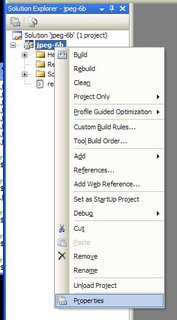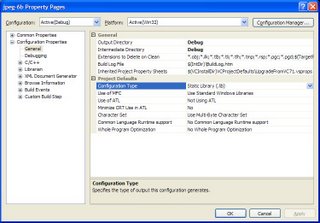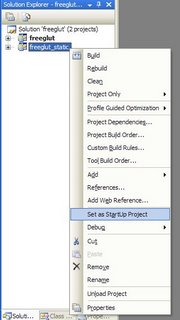This is not very well documented. After trying many permutations of
autoconf,
autoreconf, etc. I found
Building BOINC on Unix, which mentions using
_autosetup. This performs the proper sequence of
auto... operations to allow
configure to run.
I was able to build BOINC (client and server) from the latest development version in
the BOINC CVS repository using the following command:
$ ./_autosetup && ./configure --disable-unicode && make
This is step one. From what I know of our requirements a UNICODE build will be necessary.
UPDATE: While I do not know, as yet, if UNICODE is required. I do know that clientgui will not build on Fedora Core 5 without it. This appears to be because gtk2-unicode-release-2.6 is the only wxWidgets configuration that is available as reported by:
$ wx-config --list
Default config is gtk2-unicode-release-2.6
Default config will be used for output
UPDATE: Installing the packages shown below allows a UNICODE build to be performed. The
mysql-server package only needs to be installed if the
test/test_sanity.py script is going to be run, or if the BOINC server will be run from this machine. That applies to the
chkconfig and
service commands as well.
# yum install mysql-devel freeglut-devel wxGTK-devel MySQL-python mysql-server
# /sbin/chkconfig --level 2345 mysqld on
# /sbin/service mysqld start
This must be done logged in as
root, the superuser account, or using the
su or
sudo commands. Once these are installed BOINC may be built using:
$ ./_autosetup
$ ./configure
$ make
NOTE: The blogger post editor seems to have a bug, it keeps wanting to insert "amp;" after the double-ampersands above. The only thing that should appear between each command is two ampersands.
This will leave a couple files in the
sea subdirectory. The names will be like
boinc_5.4.11_i686-pc-linux-gnu.sh and
boinc_5.4.11_i686-pc-linux-gnu_debug.sh, although the numbers may vary. Running one of these will create a
BOINC subdirectory that contains the BOINC software and gives instructions on starting it. The files in this directory may be used for testing a new version of BOINC and its libraries, without loading it over the production version that should be installed in
/usr/local. The first program installs a non-debugging version, while the second installs a debugging version.
If, while running
configure, messages appear indicating that GL, GLU, GLUT, MySQL or wxWidgets are not installed, but they are,
loading ccache may correct the problem.
If you are going to build a BOINC project on this machine, the libraries and header files will need to be installed:
# make install
This will place the necessary files under the
/usr/local hierarchy.



